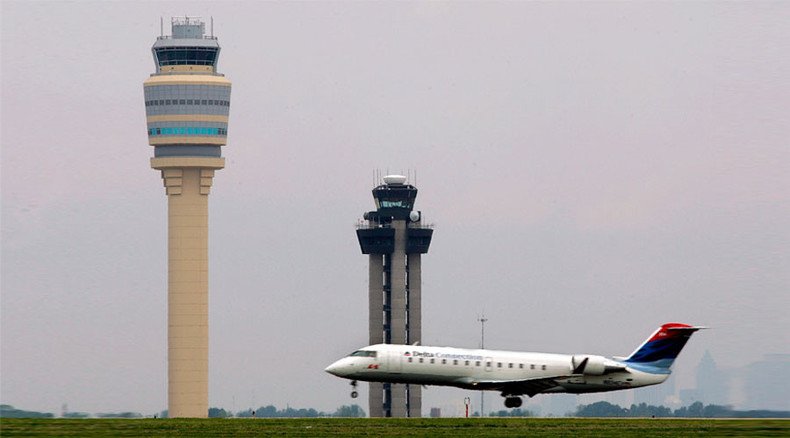Sweden testing first-ever unmanned airport control tower

Ever pictured landing in an airport with no human oversight? In an era when deadly blunders still occur and hackers infiltrate well-secured environments, a Swedish airport is testing an unmanned control tower. Operators say the technology is safer.
Welcome to Ornskoldsvik Airport in Sweden, where a lonely control tower with no one inside guides planes down safely. This may appear scary at first –the person controlling your landing is about 90 miles away, in another complex.
But the science is cheaper and more advanced, experts say. “There is a lot of good camera technology that can do things that the human eye can’t,” Pat Urbanke of Searidge Technologies, the company behind the technology, told AP.
“We understand that video is not real life, out the window. It’s a different way of surveying,” he added.
Planes, guns and automobiles: 5 scariest hacking targets http://t.co/8uWak9GVvIpic.twitter.com/1FkXghs3Er
— RT (@RT_com) August 2, 2015The human eye is a wondrous instrument – but can it see in the dark? How about fog vision or thermal sensors? Or seeing and calculating all the possible blind spots at once? What about taking care that animals or stray objects don’t impede landing?
Not all this technology functions at Ornskoldsvik yet, as there are still legal hoops to jump through. But the airport is an important testing ground for the technology, being within reach of Stockholm, as well as responsible for major international destinations.
However, the 80,000 annual passenger load just doesn’t qualify it for employing full-time control staff – costing on average $175,000 for one controller. Now multiply this by six, the necessary number of staff, and add additional costs for maintenance, comfort facilities e.g. air conditioning, elevators, extra space and manually-operated systems, and you’re faced with a much more substantial bill.
READ MORE: Planes carrying VIP passengers may get priority landing at UK airports
The technology, designed by Saab, started testing in April. Now a lone 80-foot tower rises above the site, housing 14 high-definition cameras, transmitting video to Sunsvall Airport. The airport continues to pay salaries, as the system is being tested. But in future, the idea is to build really small airports and house all the controllers together in far-away facilities.
The LVF Group, the team behind the navigation at 26 of Sweden’s airports, swears by them. Computers are very quick at determining differences in the transmission from a second before, issuing automatic alerts if something is picked up. The company’s Niclas Gustavsson predicts that “eventually there will be no towers built at all.”
The cameras are supplemented by microphones to transmit the sound of planes. This is still a human-operated system – and controllers instinctively grab their binoculars to stare at the 55-inch screens transmitting the feeds.
"Without the sound, the air traffic controllers felt very lost," said Anders Carp, head of traffic management at Saab.
Hack attack on Polish LOT airline’s system grounds 1,400 passengers http://t.co/mQbb7f2CNRpic.twitter.com/b9HNfs7lBY
— RT (@RT_com) June 22, 2015To keep the cameras clean and clear of things such as insects and dust, high-pressure wind is pumped over the windows. Testing for severe weather conditions has also been performed – with temperatures as low as -22 and a boiling 122 degrees Celsius pushing the cameras to the limit.
The technology is no longer exclusive to Sweden. Saab continues to test the gadgets and seek regulatory approval on a number of details. The company already has plans for Norway and Australia.
The US is set to become the next testing ground for the technology. Leesburg in Virginia is in line, with an unmanned tower already in place. Trial runs started early last month.
At the same time, Searidge – a competitor, wants to build an unmanned tower for Hungary’s main airport, in Budapest, which handles 8.5 million passengers a year. The company hopes to have the tower up and running sometime in 2017.












